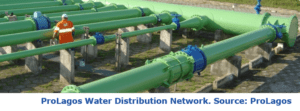SAP held its “Leonardo Live” event in Frankfurt, Germany in July to further familiarize customers, partners, media, and analysts with the company’s SAP Leonardo brand. SAP Leonardo provides an approach to develop and implement innovative processes, applications, and business models. This includes a design approach dubbed “design thinking.” SAP supports design thinking with “Leonardo Labs” located around the world. One of their labs is located in Brazil.
AEGEA in Brazil, a holding company of the ProLagos water distribution company, executed a fast track project with the SAP Leonardo Lab in Brazil. Prolagos, a company of the Aegea Sanitation group, is prototyping IoT, Big Data, machine learning, and predictive analytics on the SAP Leonardo Platform. Two of the most innovative projects that were presented at the Leonardo Live event involved Brazilian companies. Usually, Latin America is not seen as a particularly innovative region, but perhaps partially because of the SAP Lab, some very interesting work is being done in that region of the world using evolving technologies.
SAP product development teams, labs, partners, and users all have access to a portfolio of services and apps from the Leonardo Foundation that offers business and technical services. These include access to Big Data from operational technology (OT), geographical information systems (GIS), and IoT; plus machine learning to find new relationships between these data and put them into context using analytics. These analytics can then be built into “Leonardo Apps” to support existing process or business models, or facilitate new ones.

The water purification company seeks to stabilize and optimize the water supply in Armação dos Búziosis, ideally with a self-regulating system. This city is a tourist and weekend destination with a very high fluctuation in water demand. The demand for their water treatment and sewage services can increase as much as four times on a sunny day on a weekend. To more accurately forecast demand, Prolagos is doing something quite interesting. They count the number of vehicles driving into the community. Demand analysis also relies on a forecast of weather conditions and historical tourism data.
Using SAP’s design thinking approach and with the participation of a university and a partner, an application was designed that stabilizes operations along the several-kilometer-long network, including reservoirs, pumping stations, and distribution network. To anticipate demand and prepare for demand fluctuations, machine learning techniques correlated demand with weather and traffic conditions and other variables. The project resulted in a simulation model to predict demand and coordinate and controls the pumps across the network. The company estimates that this could potentially save the utility approximately $100,000 per month, some of which could be passed along to ratepayers.
The next step will be to run the system autonomously and control operations in closed loop. Operators will be notified of the changes applied by the system, observe the system behavior, and only have to intervene in case of abnormal behavior. AEGEA expects that this system could be easily applied to its other water distribution companies.
Most companies implement established solutions to reduce costs or improve service. But when companies seek to implement new technologies, not fully mature, they need extra help. The SAP Leonardo Labs can be a key partner for these kinds of projects.

















Leave a Reply